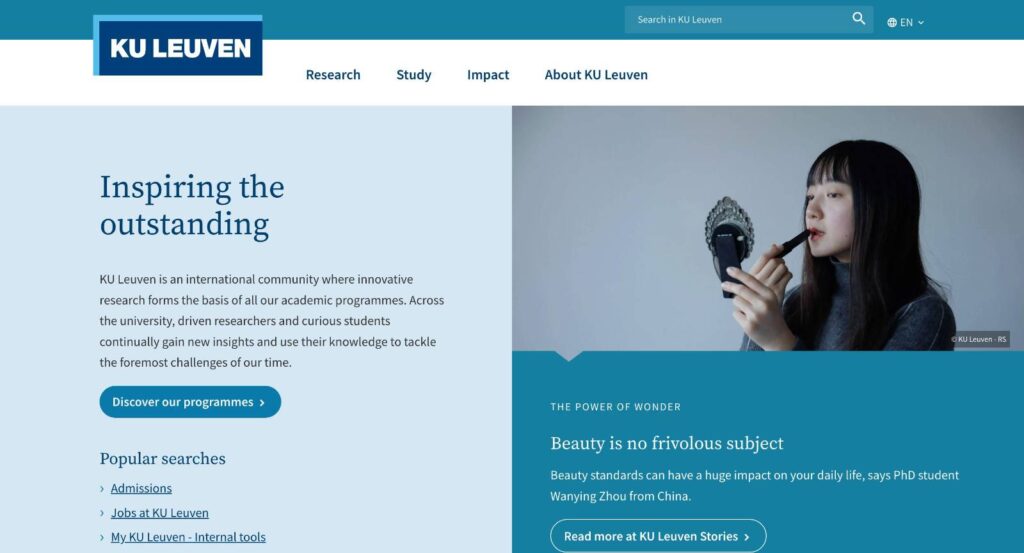By Wanying Zhou
In 2024, Wanying Zhou took an interview with Sonar Magazine from KU Leuven to share her personal journey and academic reflections on beauty standards and social inequality. Drawing on her own experience of different beauty standards in Belgium and China, she argues that beauty is far more than a matter of personal taste — it is a powerful social force that influences how we are perceived, treated, and included in society.
“In China, people comment directly on each other’s appearance — both positively and critically. That kind of clarity helps you know what’s expected. But in Belgium, everything is more reserved, and I often felt overdressed and out of place,” Zhou explains.
Arriving in Leuven in 2021, she quickly realized that beauty norms vary significantly across cultures. While bright makeup and stylish outfits are common among students in China, she found that Belgian students preferred casual clothing and natural looks. What surprised her most was that although people in Belgium rarely comment on appearance, there are still very clear, if unspoken, standards.
Zhou’s early confusion turned into curiosity. Under the supervision of Professor Giselinde Kuipers, she joined a groundbreaking European Research Council project on beauty and inequality.
“To truly understand beauty norms, you need deep cultural knowledge. As a local researcher, you’re less intimidating and you can pick up on the subtle meanings behind what people say and do,” Zhou says.
Her research in Hong Kong examines how people use makeup, present themselves on dating apps, and make judgments about physical appearance.
“Beauty determines who is seen, who is chosen, and who is left out. From job interviews to romantic relationships, appearance carries real consequences. This isn’t just a personal matter — it’s deeply political,” Zhou emphasizes.
Through her work, Wanying Zhou hopes to challenge the idea that beauty is a superficial or insignificant topic. Instead, she argues that appearance plays a central role in reinforcing social hierarchies and inequalities–a reality that deserves greater public awareness and academic attention. Read the full article here.

